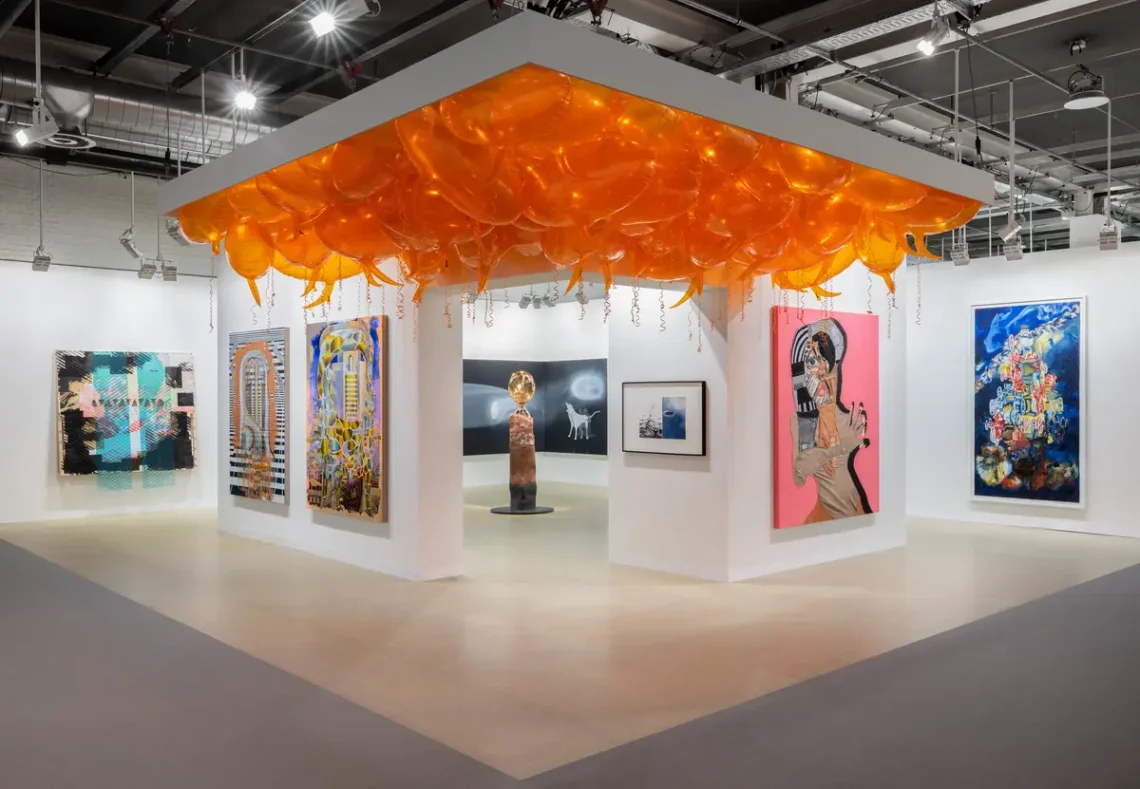Art Basel 2025 drew to a close on June 22, leaving behind more than just sales figures—it offered a snapshot of a high-stakes market recalibrating in real time. Despite global instability and a tightening art economy, Basel once again proved its gravitational pull. The Swiss city—serene, self-contained, and immune to distraction—welcomed the international art elite with its usual grace. Inside the Messeplatz, there was little room for hesitation: dealers brought their strongest works, collectors arrived with focused intent, and negotiations unfolded with quiet intensity behind booth curtains and champagne flutes.

A Familiar Formula Still Delivers
This year’s fair underscored an uncomfortable truth: in times of uncertainty, the top tier dominates. While whispers on the floor suggested slightly softened momentum compared to previous years, the headline sales told a reassuring tale. Annely Juda Fine Art reportedly achieved the highest transaction of the fair with a David Hockney piece—price confidential, but estimated between $13 and $17 million. David Zwirner followed close behind, securing $6.8 million for a Gerhard Richter canvas.
Blue-chip giants like Hauser & Wirth, Pace, and Gagosian showed no signs of retreat, with impressive placements of works by Georg Baselitz, Jeff Koons, and even Picasso. The latter’s presence, alongside Magritte and Urs Fischer, in Gagosian’s 68-artist roster, reaffirmed the dealer’s confidence in the enduring appetite for canonical names—even as prices stretched from five to eight figures.
Yet, under the surface, some murmurs persisted. “The real picture isn’t in the press releases,” one seasoned dealer remarked off-record. “Ask the shippers how much is going back into storage.”
Shifting Currents and Absent Collectors
Perhaps the most telling change wasn’t the sales volume but the audience composition. The once-dominant American collectors were largely represented through proxies—art advisors, rather than the collectors themselves—hinting at a strategic deferral until October’s Art Basel Paris. While some galleries dismissed this absence as inconsequential, others acknowledged the growing magnetism of Paris as a viable challenger, and one with stronger cultural infrastructure and broader appeal for emerging buyers.
Basel, while still a crown jewel in the fair calendar, has its constraints. Luxury accommodations were again the subject of frustration, with many attendees calling out inflated rates and limited availability. The result? A quieter presence from younger, more adventurous collectors—a demographic critical to the fair’s long-term vitality.

An Evolving Role for Basel
Still, what Basel offers remains unique. It isn’t a city of spectacle like Miami or Hong Kong; it’s a place of focus. With its world-class museums, tight-knit layout, and minimal distractions, it provides an environment where art isn’t just seen—it’s studied, discussed, and decisively acquired.
Frida Orupabo’s hauntingly elegant installation at Galerie Nordenhake, for instance, didn’t just draw eyes—it prompted real dialogue. That, more than any sale, is the fair’s real currency: influence.
The Road Ahead
As the contemporary art world continues to consolidate, Basel’s role as a global barometer remains intact—for now. But with growing tension between established names and the rising demand for fresh voices, the fair must navigate a changing landscape.
It’s clear that for the powerhouses of the industry, Basel is still indispensable. The question is whether the fair can evolve enough to remain that way for everyone else.
Written By: Lydia Kelly
Published: 7th August 2025